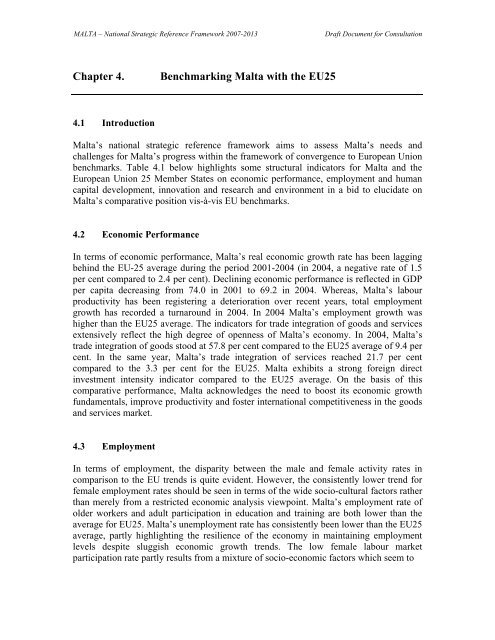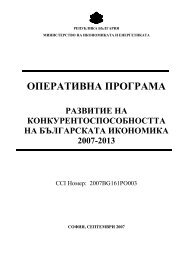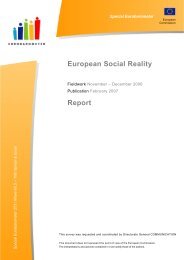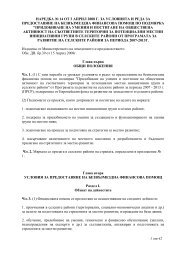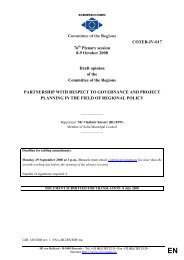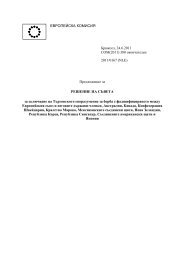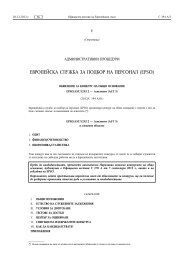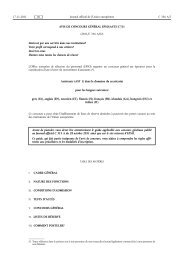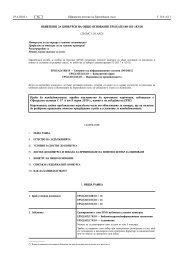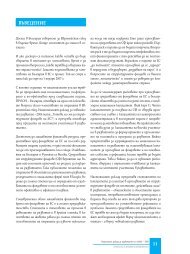National Strategic Reference Framework
National Strategic Reference Framework
National Strategic Reference Framework
You also want an ePaper? Increase the reach of your titles
YUMPU automatically turns print PDFs into web optimized ePapers that Google loves.
MALTA – <strong>National</strong> <strong>Strategic</strong> <strong>Reference</strong> <strong>Framework</strong> 2007-2013 Draft Document for Consultation<br />
Chapter 4. Benchmarking Malta with the EU25<br />
4.1 Introduction<br />
Malta’s national strategic reference framework aims to assess Malta’s needs and<br />
challenges for Malta’s progress within the framework of convergence to European Union<br />
benchmarks. Table 4.1 below highlights some structural indicators for Malta and the<br />
European Union 25 Member States on economic performance, employment and human<br />
capital development, innovation and research and environment in a bid to elucidate on<br />
Malta’s comparative position vis-à-vis EU benchmarks.<br />
4.2 Economic Performance<br />
In terms of economic performance, Malta’s real economic growth rate has been lagging<br />
behind the EU-25 average during the period 2001-2004 (in 2004, a negative rate of 1.5<br />
per cent compared to 2.4 per cent). Declining economic performance is reflected in GDP<br />
per capita decreasing from 74.0 in 2001 to 69.2 in 2004. Whereas, Malta’s labour<br />
productivity has been registering a deterioration over recent years, total employment<br />
growth has recorded a turnaround in 2004. In 2004 Malta’s employment growth was<br />
higher than the EU25 average. The indicators for trade integration of goods and services<br />
extensively reflect the high degree of openness of Malta’s economy. In 2004, Malta’s<br />
trade integration of goods stood at 57.8 per cent compared to the EU25 average of 9.4 per<br />
cent. In the same year, Malta’s trade integration of services reached 21.7 per cent<br />
compared to the 3.3 per cent for the EU25. Malta exhibits a strong foreign direct<br />
investment intensity indicator compared to the EU25 average. On the basis of this<br />
comparative performance, Malta acknowledges the need to boost its economic growth<br />
fundamentals, improve productivity and foster international competitiveness in the goods<br />
and services market.<br />
4.3 Employment<br />
In terms of employment, the disparity between the male and female activity rates in<br />
comparison to the EU trends is quite evident. However, the consistently lower trend for<br />
female employment rates should be seen in terms of the wide socio-cultural factors rather<br />
than merely from a restricted economic analysis viewpoint. Malta’s employment rate of<br />
older workers and adult participation in education and training are both lower than the<br />
average for EU25. Malta’s unemployment rate has consistently been lower than the EU25<br />
average, partly highlighting the resilience of the economy in maintaining employment<br />
levels despite sluggish economic growth trends. The low female labour market<br />
participation rate partly results from a mixture of socio-economic factors which seem to


